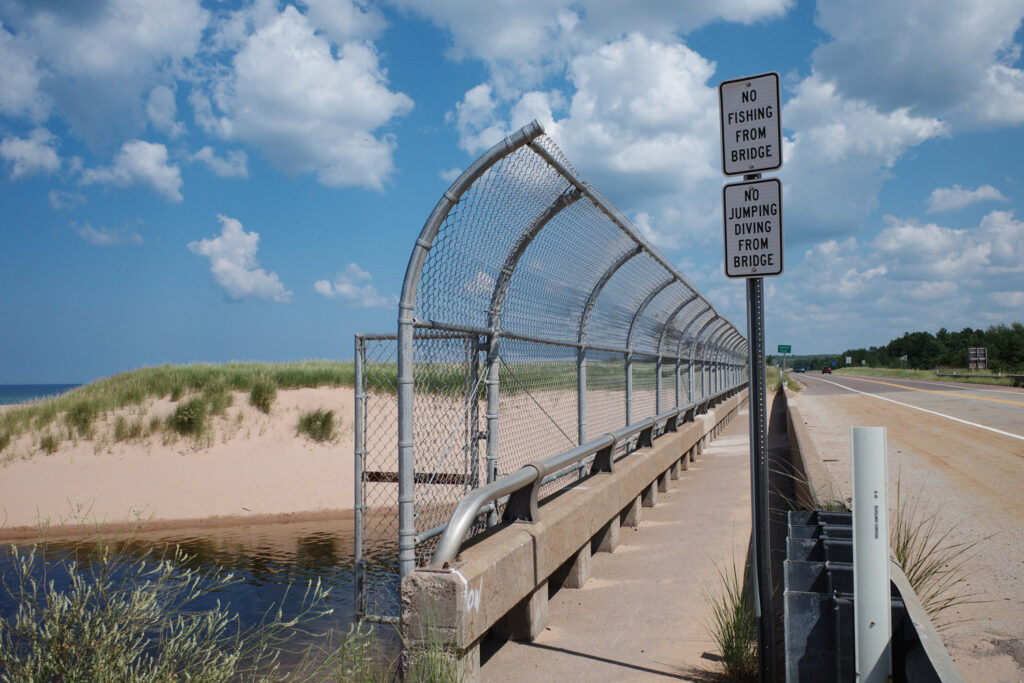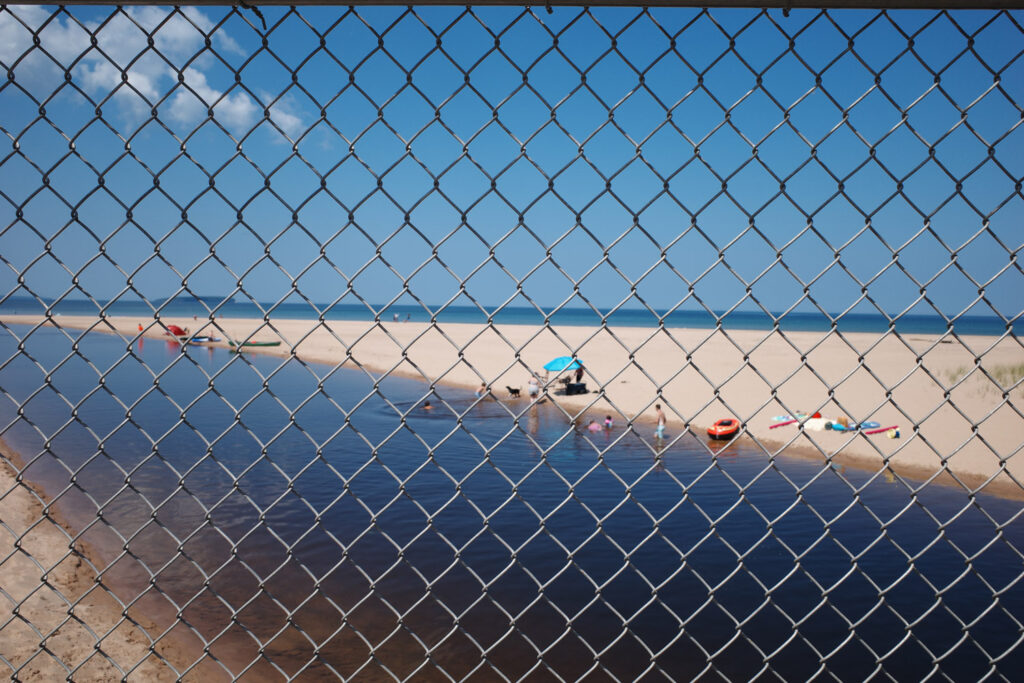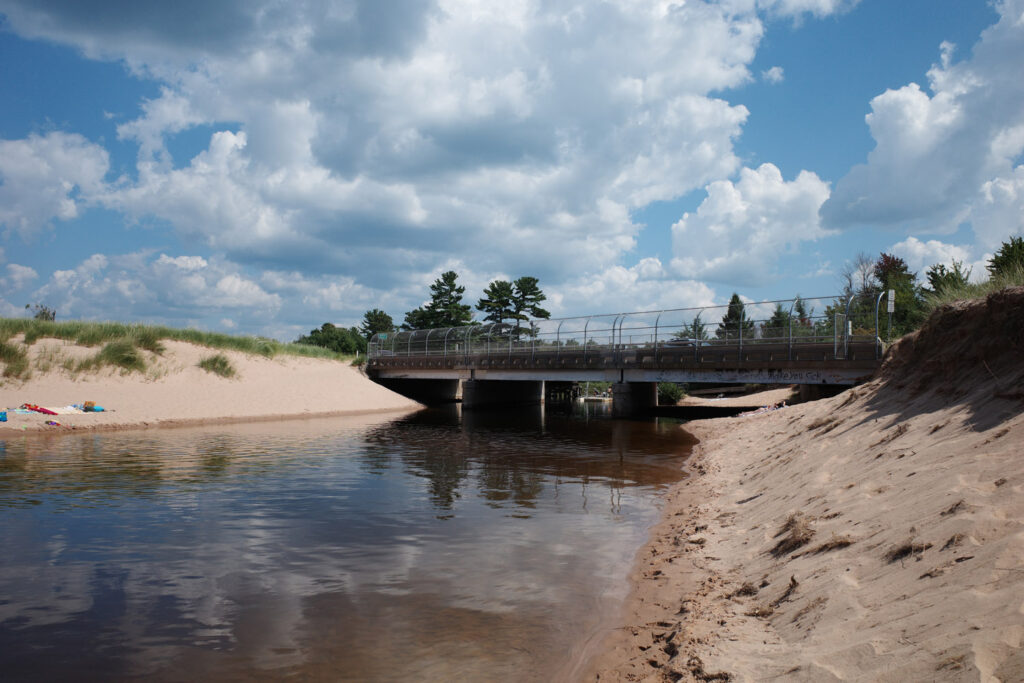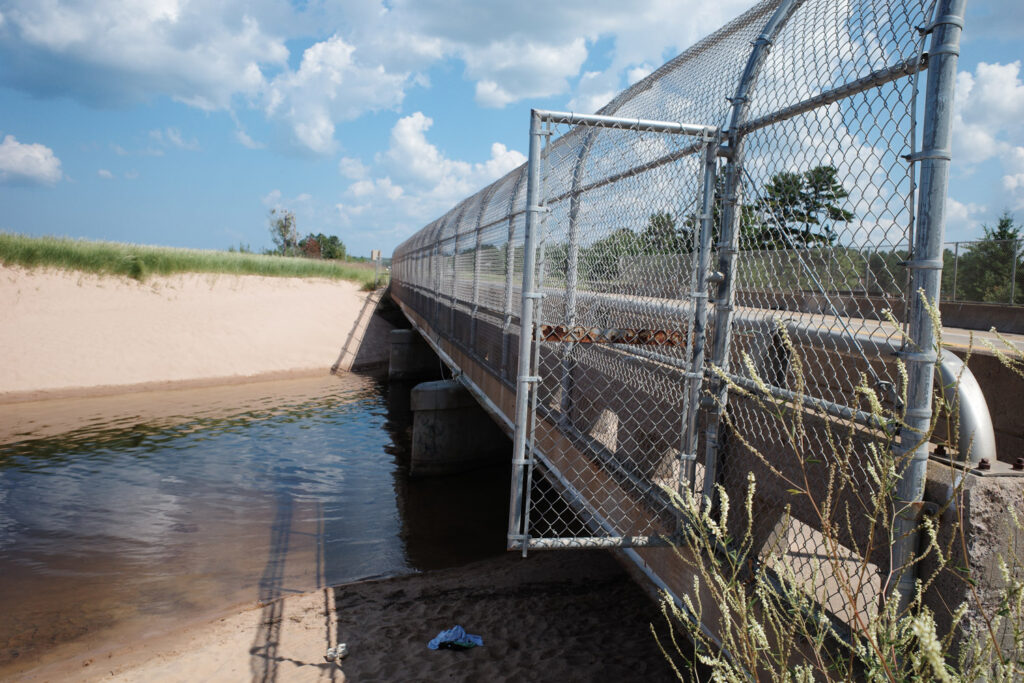They Put Up a Suicide Barrier in Au Train

Au Train — There’s a little bridge over a little river here. Nestled on the shore of Lake Superior, this small northern settlement is far away from pretty much everything and everyone. The entire township of Au Train boasts just over 1,000 residents. Every summer, people in this quiet place would stand confidently on the edge of this little bridge and look over the clear, cool waters of the Au Train River, the gentle current stirring a soft sandy bottom, the hot summer sun above. Golden sand and dune grass. Lake Superior on the horizon. Suddenly, they would leap forward and plunge into the cold water below. Release and relief.
It was a summer tradition, a rite of passage, a moment of freedom in this suffocating world. But not anymore. You can’t leap from the bridge anymore. Now there’s a tall chain-link fence blocking the ledge. You can’t get around it. You can’t get over it. It’s one of those arching fences you see on an overpass in a bad area of a dirty city. They call them suicide barriers. It’s not something you see on the serene shores of Lake Superior.

I’m walking along the water on Au Train bay. It’s the middle of August and surprisingly hot. The water is 68 degrees, delightfully warm. This might not sound so warm if you aren’t from the north. But for the Yoopers, this is basically as good as it gets. I never swim in Lake Superior, but I couldn’t resist racing out into the water and diving under a few times myself. It was, indeed, refreshing.
There are groups of young guys and girls swimming together. Kids playing in the shallow water where river lets out into Lake Superior. Moms and dads under their umbrellas, talking and laughing. The beach is vast, as much room as you want. You can spread out like you own the place. The parking lot is full. It’s a busy day for Au Train, yet it’s still peaceful, and it feels practically empty on the beach. This is a hidden paradise reserved only for those crazy enough to live up here.

Making my way along the edge of the river toward the bridge, the water is only ankle deep. I pass an older guy smoking a cigarette and casting a line in the water with a fly rod. On the other side of the river there is a young couple with some kayaks pulled up on the shore. Below the bridge there’s a young woman sunbathing. There’s spray paint across the bridge’s steel underbelly. It reads “Secrets make you sick.” The occasional car rattles over M-28, drowning out the music from her phone.
I meet a local woman sitting on the shore. Her husband is wading in the river with their kids. She tells me all about what’s going on here.
She tells me that down by the bridge is where the locals go. A lot of people from Munising come because it’s less crowded. Keep in mind, crowded means something very different up here. Munising only has a population of 2,000. It’s not exactly Holland on the Fourth of July.
The fence went up last year. Nobody likes it. Everyone she talks to says the same thing. They hate it. The bridge jump is a big tradition here. People have been coming to this same place for years. They jumped when they were kids and they want their kids to experience the same thing. But they can’t. The fence is there.

While kids can’t do the bridge jump like they used to, it doesn’t mean they don’t try. She tells me that she sees them developing new schemes all the time. There was a log that they had resting up against one of the pillars. They would shimmy up and grab onto a rope dangling from the fence. Then they would attempt to hoist themselves higher and finally jump. It didn’t work so well. Today, the log is gone.
Sometimes she sees them up the near the corner of the bridge, standing on each other’s shoulders, trying to grab ahold of the fence with the hope of working their way over to make the jump. They can’t do it. The chain-link fence cuts into their fingers. They lose their resolve and come tumbling down onto the hot sand.
But prospective jumpers can’t be held back. They have devised yet another plan. There’s a second bridge a little father off the lake. It’s higher. There’s no fence there. It used to be train tracks; now it’s for four wheelers. She tells me that she saw some kids jumping from that bridge the other day. Where there is a will, there is a way. The fence hasn’t made anyone safe. It’s just inspired kids to employ riskier moves in hopes of making a jump that so many made before. She told me that there had been a couple broken legs over the years at the fenced-off bridge, but that’s it. There was a drowning in 2017 at Au Train, but it had nothing to do with the bridge jump. A boat had capsized in Lake Superior.
So why was the fence put up at Au Train? To protect the people from themselves. But do the people of Au Train really need to be protected? Is erecting an obtrusive, ugly, chain-link fence on a little bridge over a little river in a little town so that the people can’t leap into the water on a hot summer’s day some important achievement in the further advancement of Western Civilization? No.

No one wants kids to get hurt. This should go without saying. But there was no meaningful danger at Au Train. If we are so afraid of any risk that we squash any chance at living, what are we doing here? Safetyism isn’t about having a rightful concern about making smart decisions, it’s about taking decisions off the table. It’s about eliminating any chance of living because living brings risk. It’s about sacrificing all other kinds of joy and freedom for the sake of knowing no one will ever possibly be hurt. Of course, this pursuit is naive and futile. There is always the possibility of getting hurt in almost everything we do.
It might seem small, but it isn’t. The story of the bridge at Au Train isn’t only about the bridge jump. It’s a metaphor for something bigger. The leap into the water is a leap of faith. It’s a tradition and a rite of passage. It’s about overcoming a small dose of fear and then experiencing exhilarating joy. The war on the bridge jump at Au Train is a war on local tradition. It’s the sacrifice of joy for the allure of safety, the elimination of tradition for the sake of overbearing worrywarts.
When I pulled into the parking lot at Au Train, I saw a bunch of signs on the wooden fence that separates the parking lot from the beach. They read “No Beach Access.” I was confused and asked a family getting out of their car how you get to the beach. They laughed and told me that you just jump the fence. It’s not trespassing. That’s how everyone on the beach got there. The couples, the kids, the families, the senior citizens. It’s what they do.
You can put up signs and fences in Au Train, but it’s no use. The people in the northern stretches of the U.P. don’t need someone to protect them from themselves. They don’t live here so they can be safe. They live here so they can be free.
O.W. Root is a writer based in Northern Michigan, with a focus on nature, food, style, and culture. Follow him on X @NecktieSalvage.